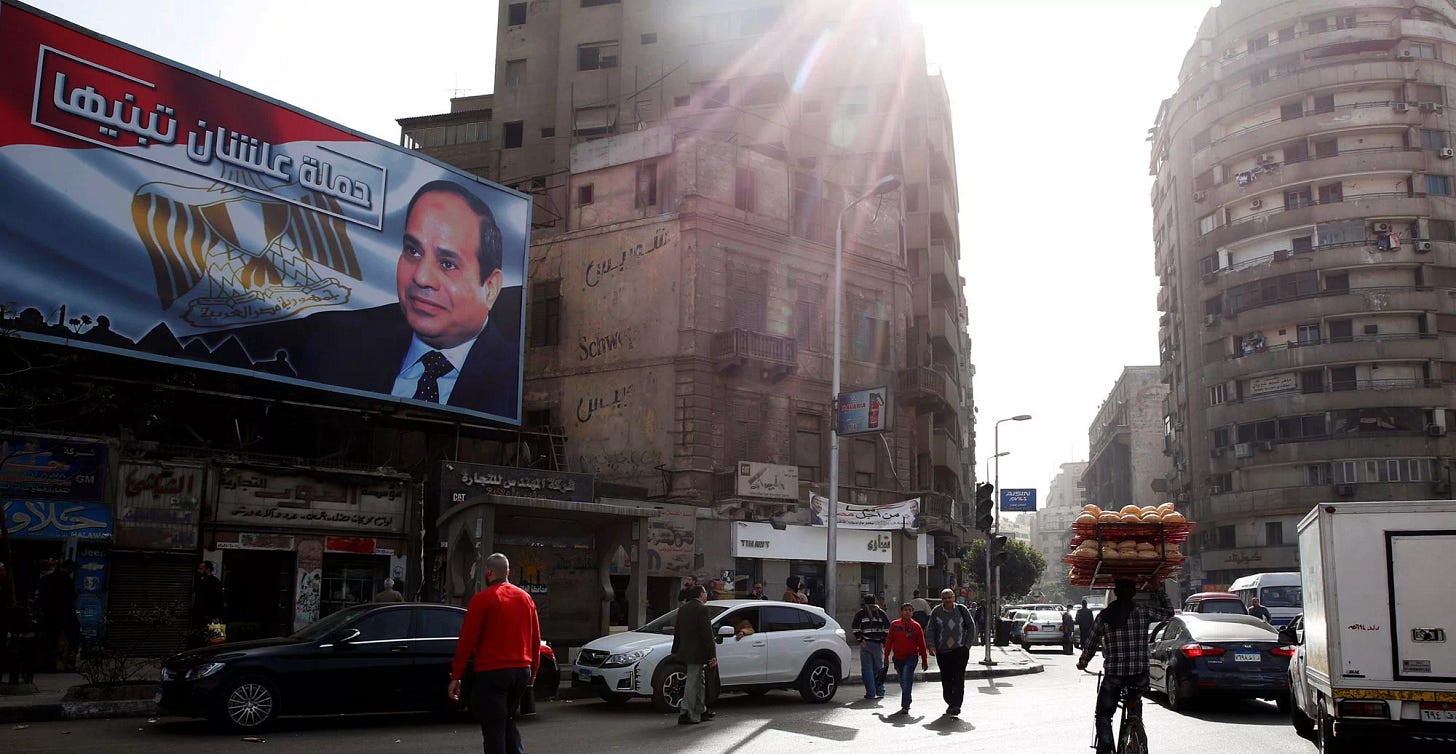With the Arab region under American–Israeli dominance—as evidenced by the ongoing genocidal campaign in Gaza and Israel’s brazen expansion and bombardment in Syria and Lebanon—the question arises: where is the pan-Arab project meant to challenge that hegemony?
This leads us to Egypt, prompting the question: under Sisi’s rule, what identity-building projects has the Egyptian regime adopted—not only for the Egyptian state, but potentially for the broader region? And how has Sisi drawn on Egypt’s historical identities, even as he lacks a clearly defined development agenda?
Identities in Service of Power
Following the January Revolution, and amidst expansive social, intellectual, and political freedoms, a debate emerged over Egypt’s identity: Is it Islamic—and which version of Islam? Pharaonic? Nasser-era Arab nationalism? Or a newer, liberal identity, symbolized even superficially by the legacy of Khedive Muhammad Ali?
Sisi rose to power without crafting a cohesive new identity to cloak his regime. Instead, he repeatedly invoked Egypt’s multiple historical identities via cultural machinery—media, arts, drama—to suit his aims.
He retained the narrative of Islam as the spiritual anchor of Arab societies and especially Egyptians. Yet, after his coup against political Islam embodied by the Muslim Brotherhood, he rejected that activist version of Islam. Across his years in power, he used the media, arts, and dozens of TV and film programs to aggressively discredit political Islam.
Simultaneously, he promoted a moderated, non-political Islam, leveraging Al‑Azhar, Sufi orders, and prominent scholars such as former Grand Mufti Ali Gomaa, positioning them as bearers of “true Islam,” while systematically eradicating activist movements through repression.
In parallel, a strain of Pan-Arab nationalism emerged—particularly in Sisi’s early years after 2013. Citizens carried placards alongside his image showing Gamal Abdel Nasser. Sisi embraced that comparison, amplifying it during celebrations of July 23 (1952 revolution) and Nasser’s death anniversary, presenting himself as not just an Egyptian but an Arab leader with a regional mission: to lift Egypt from poverty and restore it as a pivotal regional power.
Egypt’s ancient Pharaonic heritage also served his narrative of singular leadership. The April 3, 2021, transfer of 22 royal mummies from the Egyptian Museum at Tahrir to the National Museum of Egyptian Civilization in East Cairo was staged like a royal procession. Sisi walked alongside them on a red carpet, as one might imagine a Pharaoh—a spectacle that triggered debate: which identity does Egypt truly embrace? Voices rose extolling Pharaonic heritage over Arab or Islamic identity.
Identity Narratives, Not Identity Projects
Yet none of these narratives evolved into formal state identities. Sisi neither established a detailed Arab, Islamic, nor Pharaonic ideology; he merely activated them symbolically during select events—featuring Islam during July 3 (the coup’s anniversary) or when denouncing militant groups like ISIS’s Sinai Province; invoking Nasser and Pan-Arabism during Palestinian solidarity events; or recalling Nasser’s televised discussions advocating peace over war in a recently leaked transcript.
Development Projects Over Identity Narratives
For his regime, ideological identity was secondary to a vision of a “new republic” based on infrastructure, investment, and economic growth.
From day one, Sisi emphasized this “coming renaissance,” offering the public timelines to witness its unfolding. But from 2019 onward, he stopped urging patience. Instead, his speeches increasingly pivoted to heroic defenses of the nation against conspiracies—overlooking the real economic hardships citizens face.
Over the past years, Egypt has seen soaring inflation. The Egyptian pound’s plunge—around 50 to the dollar—has inflated imported goods prices. Poverty, already 29.07% in 2020, climbed to 32.05% by 2022, per World Bank data. Meanwhile, debt servicing consumes roughly 79% of the national budget, squeezing public services. Over recent years, many Egyptians have turned to digital platforms to make ends meet.
State-led development projects since 2014—from new cities in Cairo and Al‑Alamein to highways—have largely benefited military-controlled “sovereign” entities, not the public. There is minimal budgetary transparency, little parliamentary oversight, and key roles are often filled by loyalists rather than qualified experts. As a result, billions have been lost on poorly executed initiatives, unsafe road and bridge projects, and chaotic urban planning—resulting in accidents and aesthetic degradation.
Sisi’s authoritarianism has failed to crystallize either a compelling national identity or a tangible development model that improves people’s lives in education, healthcare, transport, or consumer welfare. Instead, it has achieved only a narrative of “exceptionalism”: ruthless suppression of dissent, generating fear, anger, repression, brain‑drain, and widespread disillusionment.



